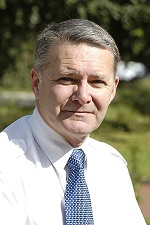Talking to machines – my thoughts on sustainability, technology, and Python

How should we ‘talk’ to machines? What language do they speak? Can they speak our language? Whatever means of communication is chosen it is now clear that for the first time in history we have the capability of ‘talking to machines’. That is to say that machines are no longer something we simply use but something we control. Herein lies the danger. If humans forget how the machine functions the machine itself will no longer be able to sustain itself in the event of breakdown.
In 1966 when I was 15 years old, we were told to read “The Machine Stops”. A short story written in 1909 by E.M. Forster it reveals a future where civilisation collapses because humans have become subservient to technology. They are no longer able to communicate with The Machine and are doomed to failure due to their unsustainable way of life. Bear in mind that the story was written long before the advent of computers and the internet. More than anything else I was propelled by this story into my chosen career.

Those of you watched the webinar June 18 will have seen part 1 of the Python Story, a hint of why it is so important that we learn to ‘talk to machines’ and use some sort of suitable language. Computer languages come and go and when I learned Fortran IV in 1969, I really thought I was living in the future. I was able to enumerate thousands of prime numbers, using Eratosthenes Sieve, in just a few seconds. How wrong I was. I was simply ’using’ a machine. The internet appeared and joined up with the world wide web so that many machines are now under our direct control. It is vital that young people be taught how to communicate with machines and use a language suitable for them and the machine. That language has become Python and for the moment is a favourite for classroom instruction and many industries. No doubt it will be displaced by other languages. But for the foreseeable future we should always keep in mind that we need to be able to communicate with the machine.
The future of young people lies in understanding how to control machines so that we live on this planet in a way which is sustainable. (Christine Buerki in webinar 4, Sustainability in STEM education); “a way which will allow generations to come to experience what life has to offer.” So, now that we can ‘talk to machines’ we must keep the conversation going!
Categories
- Computational Thinking
- Computational Thinking
- Computational Thinking
- Computational Thinking
- Computational Thinking
- STEM
- Beta Subjects
- Calculator
- CODING
- CONFERENCES
- Content
- Distance Learning
- Math
- Physics
- Programming
- PYTHON
- Resources
- Robotics
- SCIENCE
- Sustainability
- T3
- Ti-83 Premium CE
- Training
- Tutorials
- YouTube
Tagcloud
Archive
- 2023
- 2022
- 2021
- 2020
- 2019
- 2018
